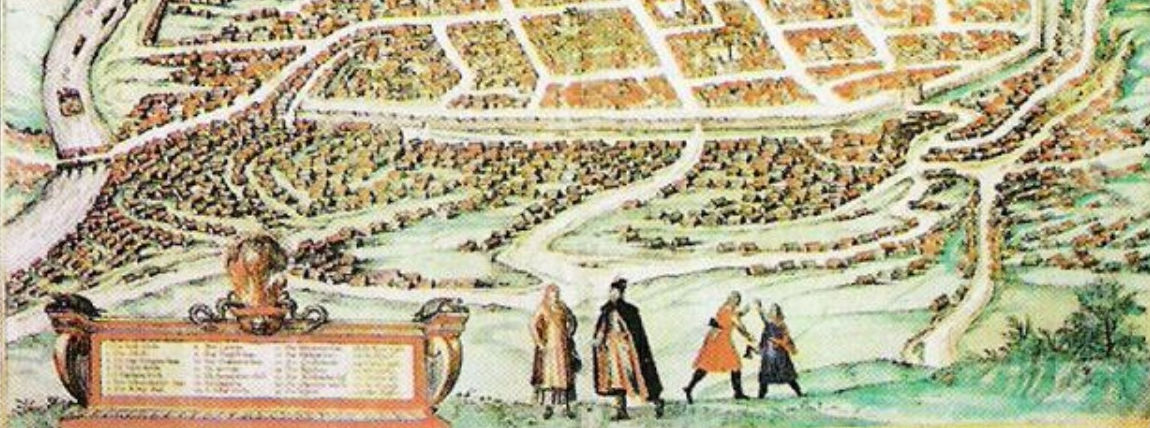The Paradise Garden in Rasų Suburb
The Paradise Garden in Rasų Suburb. The garden spread in a wonderful location where elevations of various grades transiting into Rasų hills, intersected by ditches and springs emerged as a splendid natural view, which in the 19th c. was considered to be one of the most beautiful spots of suburban Vilnius. Untarnished landscape survived until the 20th c. The 1938 Official Plan left Monastery of Visitation nuns and Paradise along with other gardens located here as part of the green space not to be touched.
Since as early as the 18th c. parks and gardens were set up here making use of the nature, interesting landscape and a view opening up from the Rasų Hills. The so called Paradise Garden was known to have been here since as early as the 17th c. Until 1733 it belonged to Jesuits who made it even more beautiful, set up a pond and enclosed it with a fence displaying biblical drawings. Hence the name of the garden. In 1773, after the Jesuit Order was shut down, the Paradise Garden went to Sisters of Mercy Monastery and the shelter of Baby Jesus. During the revolt of 1794 the park suffered great damages, and in the 19th c. it was converted into horticultural gardens.
Korvell and Roėnne Gardens and Parks and other suburban Rasų and Rūdninkų parks. Gardens spreading behind Monastery of Visitation nuns and Paradise garden were owned at different times by noblemen Plater, Czapski, later Korvell. These were regularly landscaped gardens by Rasų street. In the 2nd quarter of the 19th c they expanded in the direction of Rasų cemetery and develop into a huge park-garden known as Korvell Garden. Later the railway construction severed the park into two parts, following which these parts were bought by a banker and patron of arts J.Montvila, who built here a residential block on today’s Balstogės street.
Roėnne Garden was behind Aušros Vartai, the Gate of Dawn, in the southern part of Paradise lane (today’s M.Daukšos street.). Its territory was intersected by Rasų lane, with its eastern pat divided into regular quadrangles, and the western part divided by curved lasso-shaped paths.
Strumilos Gardens spread in a spacious territory, approximately where today we have both parts of Sodų street and extending as far as St. Stephen’s street. The famous gardener theoretician J.Strumila (J.Strumillo) set up his gardens here. The surviving 1845 city map shows that as early as mid 19th c. -after the gardener died - these land plots were sold and rather soon saw housing developments. Some remains of this garden we can still see on the hill between Sodų and St. Stephen’s street, where wonderful views of the Old Town open up as well. The tradition of garden design of Strumila was continued by the Wėller gardeners’ dynasty that bought part of Strumila’s garden land in the territories of toady’s 11-13 and 8 Sodų street. The latter land plot had a small garden surviving until 1940 that spread as far as Pylimo street and had huge greenhouses. The Wėller were known as gardening businessmen that supplied the whole city with flowers and plant seeds.
![]()
Vilnius Civil Governors’, Palace Garden
Former Oskierka, later Vilnius Civil Governors’, Palace Gardenwas located at today’s 3a-7 Klaipėdos street. During the conversion of the old Oskierka Palace in 1824, nobleman M. Abramowicz built a wonderful garden with a racecourse and sand-laid paths following the example of the French empirical style residencies. Later when they became the headquarters of Vilnius Civil Governors, the garden had a few lawns and alleys. The garden was redeveloped in 1924 converting the buildings into offices of Vilnius Ward’s Office. Now the yard only has the surviving alley of old trees, whereas the palace was torn down after World war 2.








